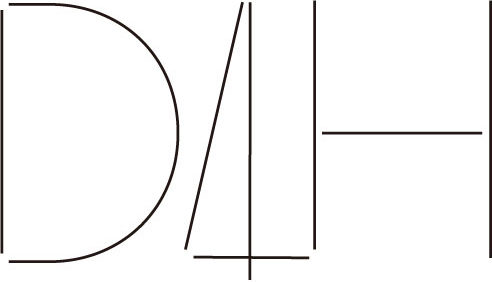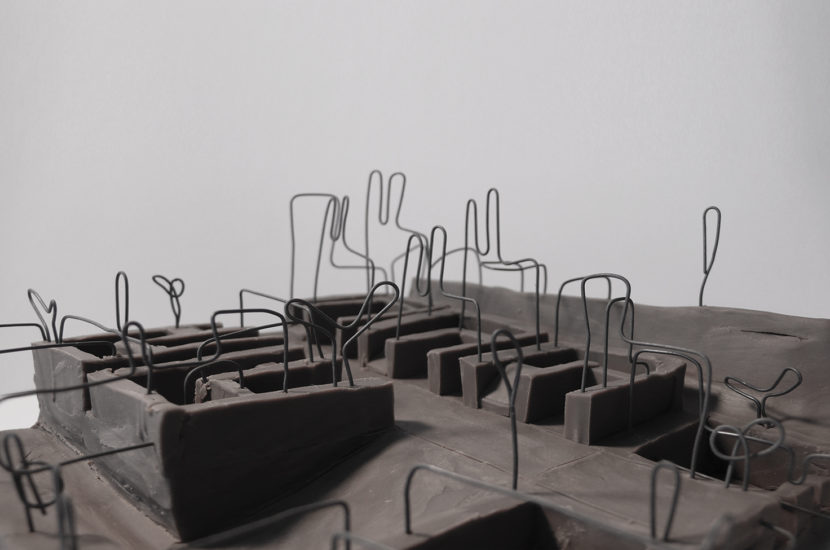STATEMENT
遺産を、くらしの中の価値へ
1.「まもる」と「つくる」のあいだで
かつて「まもる」ことと「つくる」ことの間には今日ほど明確な境界線は存在していませんでした。「まもる/つくる」が連続一体となって存在した世界には、ものを生み出し育てることの喜びや、維持することの必然、だれもが参加可能な場所がありました。私たちは、この「まもる」ことと「つくる」ことが互いにせめぎ合う世界の中にこそ、文化を育む原動力があると考えています。D4Hは、もう一度その原点に立ち返り、“文化財”や“遺産”として「まもる」ことを中心に特別に取り出された価値を、「つくる」ことから切り離されることのない、絶え間ない創造の流れの中に戻すことを目指します。
2.刻み込まれた断片
美術品や工芸品が、時を経ることによって新たな見方を獲得することがあるように、文化遺産もまた時代の変化の中で、絶えずその価値は再定義され続けられるものと考えています。
創建当初の姿を保つものに限らず、長い時間経過の中で多くの手が加えられたもの、原形をとどめない廃墟同然の遺産、あるいは目をそむけたくなるような悲惨な歴史の証跡であっても、それらが現実世界に存在し続ける限り、私たちの暮らしや記憶・価値観に何らかのかたちで影響を与え続けています。
あらゆる文化の断片が、現実の環境の中に刻み込まれていることで、私たちは移りゆく時の中でも、その確かな一次情報を基に世界を認識し、共有し、現在地点を知ることができます。遺産は、かつてそれらが産み落とされた時間や場所へと私たちが思いを至らせるための入口やきっかけを提供し続けてくれています。
しかし、それら文化の断片は、常に秩序よく、目につく場所に存在するわけでなく、また現代の暮らしに直接結びついているとも限りません。むしろ過去の遺物として日常から切り離された場所に移されたり、雑多に折り重なったものたちに埋もれたりしていることが多いのです。
3.埋もれた価値の発掘
私たちの仕事は、まずその埋もれた価値を掘り起こすことから始まります。断ち割られた土層断面や出土遺物、場所や建物に残された数多の痕跡、あるいは歴史史料を手がかりに、そのものの生い立ちを遡ります。私たちは、いかなるものにも固有の物語があると考えています。希少性や既成の枠組みにとらわれず、常にそのものの根底にある独自の価値をすくいあげます。そして、現在・未来において、その価値が発揮される場面や、再び生きられる居場所、今を生きる人々の暮らしとの接点を探り、大きな風景、環境、時間、歴史的文脈の中に位置づけなおすことを目指します。D4Hは、この価値の発掘から新たな場面の発見、価値の再定義に至るリサーチに多くのエネルギーを注ぎます。
4.修復とデザイン
私たちの仕事の中心は遺産の修復です。掘り起こした断片の傷みを繕い、旧材に新材を継ぎ接ぎ、断片相互の関係性を調整し、再び時間や環境の流れの中に戻すことです。しかしそれだけでは、遺産を現在の暮らしに接続させるには十分ではない場面も多いのではないでしょうか。歴史的遺産が現在や未来を生きていくためには、今の暮らしとの接点となるデザインが必要だと考えています。その接点となる要素を新たに付加すること、遺産の現代的な意味を問うこと、未来へのロードマップを描くことが私たちの考えるデザインです。それは、断片同士を継ぎ接ぐための糸のようなもの、断絶した時間をつなぐ橋のようなもの、遺産の隠れた価値に出会う窓のようなものとして、時にささやかに時に大胆に現れます。
5.Design for Heritageの目指す世界
“Design for Heritage” は、森羅万象そこに在るもの在ったものへのリスペクトから出発し、それを現在・未来に引き継ぐために、「まもる」ことと「つくる」ことの境界線上からデザインすることをミッションとした集団です。D4Hは、遺産を「まもる」だけの対象から、「つくる」ことと一体となった創造的な世界の中に、もう一度位置づけなおし、現在を生きる人々の暮らしのなかの価値にしていくことを目指します。そのために、あらゆる分野を横断するリサーチとデザインを強みに、現代の豊かさにつながる遺産の在り方を探求し続けます。
Weaving heritage into life
- At the intersection of conservation and creation
At one time, the concepts of conservation and creation were not so distinct—as part of a process that was integrated into people’s lives, the pleasure of creating and cultivating things was intertwined with the necessity of maintaining them. We believe that culture is driven by this interaction between conservation and creation. Design for Heritage (D4H) strives to return to this earlier way of thinking by reintegrating the value of cultural resources or heritage, usually set aside for special conservation, into the constant flow of creation. - Fragments of culture
Just as people develop new ways of seeing and appreciating artworks and artifacts as time passes, we believe the value of cultural heritage is constantly redefined through different eras.
So long as a piece of heritage remains in the real world—whether in its original form or altered over time, even in ruin or as a reminder of tragic history—it continues to influence our lives, memories, and values.
Every fragment of culture is embedded in our real environment as certain, direct information that enables us to perceive the world, share a common experience, and recognize where we are even amid the flow of time. Heritage provides us a point of entry and chance to think about the time and place in which it was created.
However, these cultural fragments are not always neatly arranged where we can see them, nor integrated into contemporary life, instead existing as relics of the past that have been displaced from everyday life or lost amid the incoherence of other objects. - Uncovering buried value
Our work begins by uncovering buried value. We trace the origins of objects back through time, drawing on historic documents and clues such as fractured soil layers, excavated artifacts, and traces left behind in places and buildings. We believe that everything has a unique story. We always seek out the essential value of each object, regardless of how common or scarce, or the way it is ordinarily understood. We aim to reconnect that value with the broader landscape, environment, time, and historical context by searching for how that value can be unleashed, places where it can be reanimated, and made relevant to the lives of people now alive, in the present and the future. D4H devotes energy to research that spans from uncovering value to discovering new dimensions and redefining value.
- Restoration and design
The core of our work is heritage restoration. We fix the scars of unearthed fragments, combine old and new materials, adjust how fragments relate to each other, and re-place them within the flow of time and the environment. Yet this is often not enough to connect heritage to contemporary life. We believe that in order for historical heritage to come alive in the present and future, it is necessary to design points of contact with modern lifestyles. Our philosophy of design entails adding new elements that serve as points of contact, contemplating the contemporary meaning of heritage, and drawing a roadmap to the future. Design can play a subtle or prominent role as the thread that ties fragments together, the bridge that links disconnected moments in time, and the window onto the hidden value of heritage.
- Design for Heritage’s vision
Design for Heritage sees its mission as the pursuit of design at the intersection of conservation and creation. This approach is rooted in respect for all that exists or has existed, in order to bring it forward into the present and future. D4H aims to transform heritage from merely an object of conservation and relocate it as part of a creative world where conservation is integrated with creation, unlocking everyday value for people alive today. We will continue to leverage our strengths in multidisciplinary research and design in the search for how heritage can lead to richness for people in the present.

